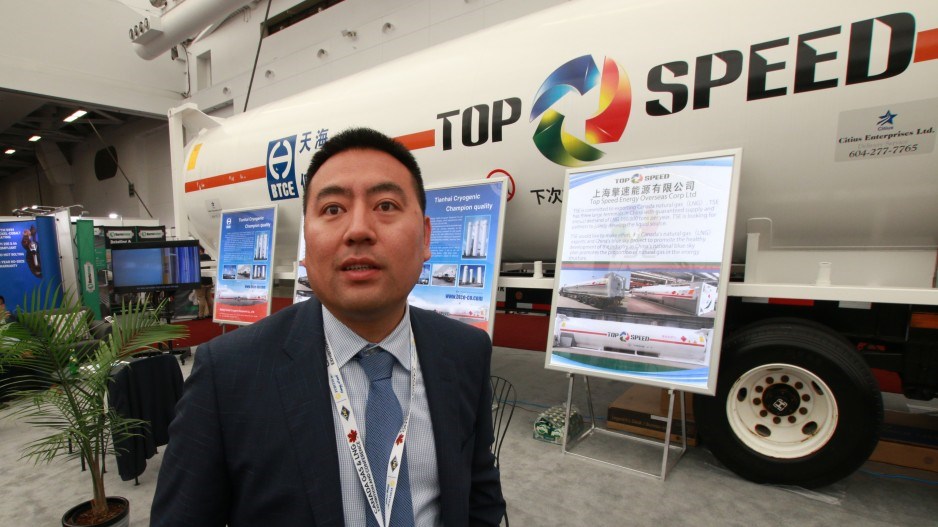It will be another four or five years before the $40 billion LNG Canada project begins shipping liquefied natural gas to customers in Asia.
But smaller players are already exporting LNG from B.C., thanks to a recent $400 million expansion of FortisBC's Tilbury Island plant.
The plant has been used since the 1970s to liquefy natural gas for backup storage. But following a recently completed expansion, the plant now can produce up to 250,000 tonnes of LNG per year. While some of that LNG is used for the domestic market, primarily trucking, some is now being exported.
In 2017, Calvin Xu's company, True North, shipped its first test shipment of Tilbury Island LNG to China by intermodal (ISO) container. Last year, he shipped 50 containers – about 900 tonnes.
Another company, Beijing Tianhai Cryogenic (BTCE), shipped 1,000 tonnes by ISO container.
“This year, our plan is 2,000 tonnes to 5,000 tonnes,” said Cui Zhichen, vice general manager for BTCE.
Both companies buy the LNG from FortisBC and ship it by ISO containers on container ships to industrial buyers in China.
Doug Stout, vice president of market development for FortisBC, said four or five small shippers like True North and BTCE have sprung up in the last year.
Xu sees a potential to grow the export busine in China, although he said the container terminal operator his company uses in Vancouver, GCT Vantherm, has added costs that he thinks are unreasonable.
Last year, he said GCT Vantherm added a special LNG surcharge of $1,500 per container, each way. For a 15-container shipment, that adds up to $45,000 in additional surcharges.
“It’s killing the economics,” he said.
Xu said he and FortisBC recently got the terminal operator to reduce the surcharge to $800 for each full container and $475 for each empty one that comes in. But Xu still thinks it’s “unreasonable” to apply an LNG surcharge on incoming containers that are empty.
GCT Vantherm explained that the surcharge is needed because handling LNG containers requires "additional operational considerations" and handling procedures.
"As such, GCT has entered into a pilot program with FortisBC for handling these specialized containers. As this is a new commodity being handled, GCT has also engaged with our labour work force and our safety teams to ensure proper handling procedures are in place."
In addition to a growing export market, FortisBC is working to develop a new marine bunkering business that would serve vessels that are powered by LNG.
FortisBC is working with WesPac Midstream to build a new marine jetty to create a new LNG bunkering terminal.
“Our goal is to provide LNG services up and down the West coast and make Canada a key hub in marine bunkering,” Stout said. “As the IMO (International Maritime Organization) rules tighten up here in 2020, which is very far away, we see great opportunity going forward on this.”
@nbennett_biv



